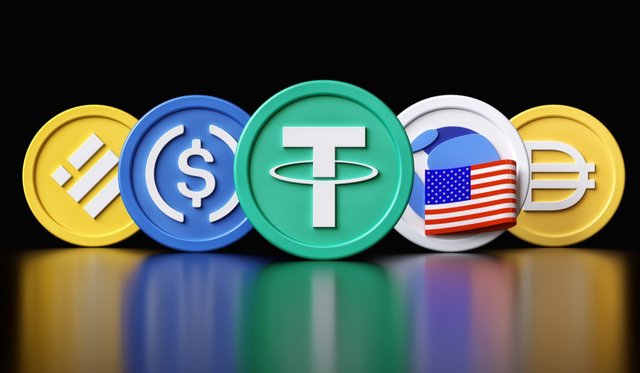How Will Stablecoin Development Impact Monetary Policies?
In the ever-evolving landscape of digital currencies, stablecoins have emerged as a fascinating phenomenon. Designed to mitigate the volatility commonly associated with cryptocurrencies like Bitcoin and Ethereum, stablecoins offer a more stable value proposition by pegging their worth to traditional fiat currencies, commodities, or even algorithms. As these digital assets gain traction, it's imperative to assess their potential impact on monetary policies worldwide.
Understanding Stablecoins: A Brief Overview
Before delving into their impact on monetary policies, it's essential to grasp the essence of stablecoins. Unlike their volatile counterparts, stablecoin development maintain a stable value, typically pegged to a fiat currency like the US dollar or a basket of assets. This stability is achieved through various mechanisms, including collateralization, algorithmic mechanisms, or a combination of both.
The Promise of Stability: Mitigating Volatility
One of the primary motivations behind stablecoin development is to address the inherent volatility plaguing traditional cryptocurrencies. The fluctuating prices of Bitcoin and other major cryptocurrencies have hindered their mainstream adoption as mediums of exchange or stores of value. Stablecoins offer a solution to this problem by providing a reliable unit of account and a medium of exchange without the wild price swings.
Enhancing Financial Inclusion and Accessibility
Stablecoins hold the potential to revolutionize the global financial landscape by promoting financial inclusion and accessibility. With traditional banking services often inaccessible to large segments of the population, especially in developing countries, stablecoins offer a viable alternative. Individuals can access financial services like savings, loans, and remittances through stablecoin-powered platforms, transcending geographical and bureaucratic barriers.
Challenges and Regulatory Scrutiny
Despite their potential benefits, stablecoins face regulatory challenges and scrutiny from policymakers worldwide. Concerns regarding money laundering, financial stability, and consumer protection have prompted regulators to closely monitor and regulate stablecoin projects. The lack of a clear regulatory framework poses a significant obstacle to the widespread adoption of stablecoins and their integration into the existing financial system.
Impact on Monetary Policies: A Paradigm Shift
The proliferation of stablecoins has the potential to disrupt traditional monetary policies implemented by central banks globally. Central banks utilize monetary policy tools like interest rates, open market operations, and reserve requirements to regulate the money supply, inflation, and economic growth. However, the emergence of stablecoins introduces a new dynamic into the monetary policy landscape.
1. Decentralization and Monetary Policy Independence
Stablecoins, particularly those built on blockchain technology, operate in a decentralized manner, independent of central bank control. This decentralization challenges the monopoly of central banks over the issuance and regulation of money. As stablecoins gain prominence, central banks may face pressure to adapt their monetary policies to accommodate the growing influence of digital currencies.
2. Monetary Policy Transmission Mechanisms
Traditional monetary policy transmission mechanisms rely on the banking system to influence economic activity through credit creation and interest rate adjustments. However, the widespread adoption of stablecoins could alter these transmission channels. Users may opt to hold and transact in stablecoins instead of traditional fiat currencies, potentially diminishing the effectiveness of central bank policies.
3. Financial Stability and Systemic Risks
The proliferation of stablecoins also raises concerns about financial stability and systemic risks. Unlike traditional bank deposits, stablecoin holdings are not insured by government-backed deposit insurance schemes. A run on stablecoin reserves or a collapse of a stablecoin issuer could have systemic implications, destabilizing financial markets and undermining confidence in the broader financial system.
4. Currency Substitution and Exchange Rate Stability
Stablecoins pegged to foreign currencies could facilitate currency substitution, especially in regions plagued by hyperinflation or currency devaluation. This could impact exchange rate stability and challenge the ability of central banks to manage their domestic currencies' value. Additionally, central banks may face increased competition in the foreign exchange market from stablecoin issuers offering alternative currency pegs.
Conclusion: Navigating the Future
The development and proliferation of stablecoins represent a significant milestone in the evolution of digital currencies. While offering the promise of stability, financial inclusion, and accessibility, stablecoins also pose complex challenges for monetary policymakers. As central banks grapple with the implications of this emerging asset class, collaboration between regulators, industry stakeholders, and policymakers will be crucial in navigating the evolving landscape of monetary policies in the digital age.
